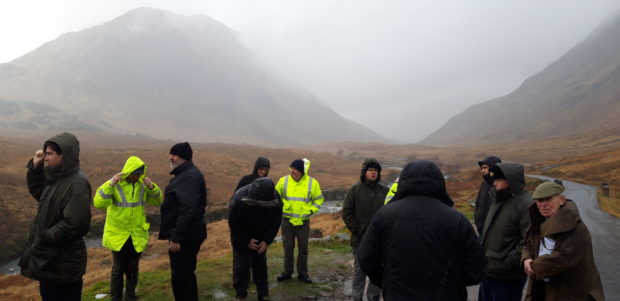Electricity from renewable energy is essential for modern living and mitigating climate change but here in the north our people are getting a very poor deal.
In 2011, the then First Minister Alex Salmond said we were “are at the forefront of an energy revolution which would allow Scotland to become the Saudi Arabia of renewable energy”.
As then Highland Council Leader, I was sceptical and warned that the offshore renewable turbines would come in on a huge ship from Bremerhaven whilst we only gained a few jobs in hotels.
And so it was.
The offshore turbine installations are being built elsewhere with the jackets and turbines coming from Spain, Germany and Denmark.
In recent procurement requirements – local does not mean Scotland including the ill fated BiFab- it means the UK, such as the Belgium-owned yard at Newcastle.
I welcome the news of 60 construction jobs at Arnish but Scotland has lost out on the offshore renewable supply chain. Where were the Scottish Government and the Enterprise Companies?
The development of the Beatrice field of 84 offshore wind turbines at a cost of £2.6 billion is a very impressive engineering achievement.
We now need to ensure that we train our own local workforce with the skills to maintain and service these installations. Training in a range of skills from boatman to service engineers should be provided by the University of the Highlands and Islands – from the adjacent Colleges of North Highland, Inverness and Moray- and with Aberdeen University.
The sum paid by SSE in community benefit totals only £6 million, a sum described as “peanuts” by the current Highland Council leader.
Thirty years ago, at the time of the first onshore wind farm development at Novar, with my colleagues Val Maciver and Francis Keith, we practically the idea that the local community should benefit, as well as the landowner and the developer ,from the use of the wind and the water. This was not a bribe nor compensation for construction disruption, as is often stated.
The rate: £5,000 per megawatt annually. This 30-year-old rate, if applied to the Beatrice Field, would amount to £2 million annually for the communities in Caithness,Sutherland and Moray.
So, up to to £30 billion in future profit for the developers, few local jobs and a very small financial community benefit.
Hopefully, we will learn the lessons as tidal schemes are progressed. Recently, a tidal turbine array in the Pentland Firth, between Caithness and Orkney, set a new world record for generating power and exporting into the national grid. The potential is enormous as tidal energy is capable of generating 20% of all electricity needs in the UK. We must ensure that the infrastructure is built in Scotland, utilising yards in the north to the maximum.
The support industry must be based in the north providing well paid jobs for local people.
Onshore, we have some very positive examples of renewable energy schemes sustaining island communities.
On community owned Gigha, the four wind turbines provide the profit to power the regeneration of the community and its buildings.
Similarly on the Isle of Eigg, their complex of a hydro scheme, four wind turbines and a photo voltaic range, feeding into a battery bank, supplies 90% of the islanders’ needs with any excess going to heat public buildings.
Until a decade ago local estate owners as well as Forestry Commission Scotland, developing hydro schemes, were willing to give a few hundred or thousand pounds to their local communities, based on £5,000 per megawatt.
Now, for schemes in the West Highlands, most absentee landowners refuse to make any payment to the local community, whilst they receive a 12-40% return on their investment; as miserly as refusing to leave a £10 note at a funeral towards the local hospice or hospital.
And the consequences of ill-thought-out hydro schemes escalate.
Poorly designed and built access tracks will now remain as a scar on the landscape for decades.
Unacceptable intrusions into designated landscapes and historic sites, such as adjacent to the ruins of the house where MacDonald of Inveriggan and his family were slaughtered during the massacre of Glencoe.
A controversial scheme is proposed for Glen Etive – impacting negatively on the many hundreds of kayakers paddling down the River Etive and accessing its three key feeder burns from the East. These burns, when in spate, are an experience regarded by kayackers as world class. Many mountaineers also access the slabs of Ben Trilleachan via Glen Etive. The economic impact of these adventurers is huge and underestimated.
Tom Johnstone, wartime Scottish Secretary and later Chair of the North of Scotland Hydro Electric Board, was rightly lauded for bringing ” lights to the Glens” and ensuring a vital social remit which meant that users in the north paid less than the rest of Scotland
Who now benefits from these fifties hydro- electric schemes?
Certainly not the residents in the north, with many suffering the highest levels of fuel poverty in Western Europe, whilst paying a 2p surcharge per kw compared to consumers elsewhere.
Serious action is required and we need to get angry.
Michael Foxley is a former leader of Highland Council and a retired GP











